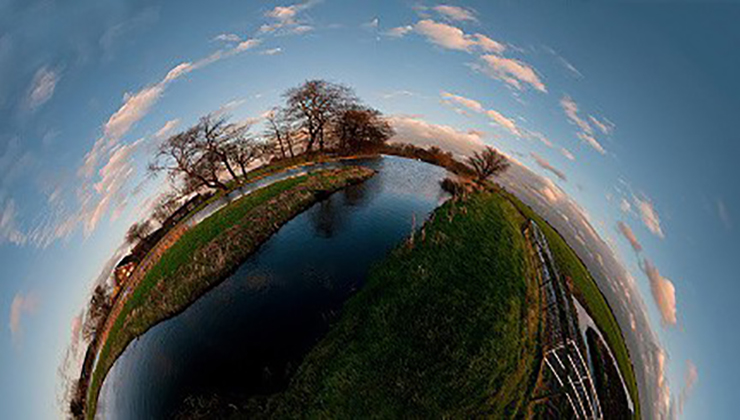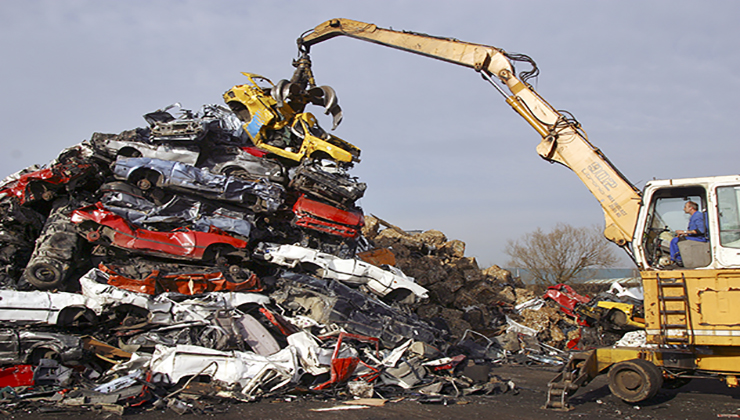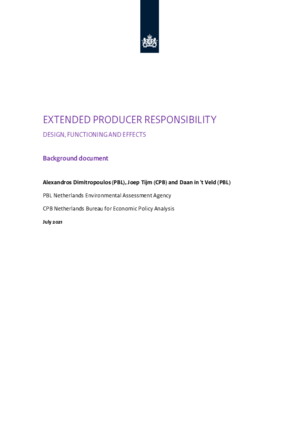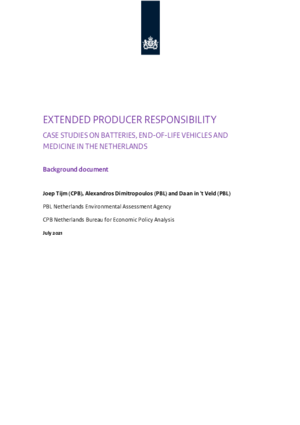Extended producer responsibility: design, functioning and effects

Effects of EPR are determined by its design
EPR employs various policy instruments to make producers — financially, and sometimes also organisationally — responsible for the collection, sorting and treatment of end-of-life products. The most common EPR instruments are take-back requirements, advance disposal and recycling fees, and deposit-refund systems. Existing EPR designs have generally increased collection rates, promoted recycling and shifted financial responsibility from municipalities to producers. While knowledge gaps exist, there is likely ample room to steer EPR design towards promoting reuse, high-quality recycling and eco-design.
Downloads
Scope of EPR is key for its environmental effectiveness
In practice, producers’ financial responsibility is limited to separately collected product streams. A wider policy implication of our studies is to expand the scope of EPR to end-of-life products that are not separately collected. This applies to both products that are improperly disposed of in the EU, but also used products exported to third countries where EPR is not implemented. Introducing EPR to other products groups, including medicines and motor vehicles beyond cars and vans, is likely to prevent environmental damages from littering and illegal dumping, and to direct more material flows towards reuse and recycling.
EPR is no panacea
The circular economy aspires to more than what EPR can deliver on its own. Just as its effects depend on other (waste) policies, EPR will always require accompanying policies — mostly targeted at the production and consumption phases of a product’s lifecycle — to facilitate the transition to a circular economy.
External authors: Alexandros Dimitropoulos (PBL), Daan in 't Veld (PBL)

Effects of EPR are determined by its design
EPR employs various policy instruments to make producers — financially, and sometimes also organisationally — responsible for the collection, sorting and treatment of end-of-life products. The most common EPR instruments are take-back requirements, advance disposal and recycling fees, and deposit-refund systems. Existing EPR designs have generally increased collection rates, promoted recycling and shifted financial responsibility from municipalities to producers. While knowledge gaps exist, there is likely ample room to steer EPR design towards promoting reuse, high-quality recycling and eco-design.
Downloads
Scope of EPR is key for its environmental effectiveness
In practice, producers’ financial responsibility is limited to separately collected product streams. A wider policy implication of our studies is to expand the scope of EPR to end-of-life products that are not separately collected. This applies to both products that are improperly disposed of in the EU, but also used products exported to third countries where EPR is not implemented. Introducing EPR to other products groups, including medicines and motor vehicles beyond cars and vans, is likely to prevent environmental damages from littering and illegal dumping, and to direct more material flows towards reuse and recycling.
EPR is no panacea
The circular economy aspires to more than what EPR can deliver on its own. Just as its effects depend on other (waste) policies, EPR will always require accompanying policies — mostly targeted at the production and consumption phases of a product’s lifecycle — to facilitate the transition to a circular economy.
External authors: Alexandros Dimitropoulos (PBL), Daan in 't Veld (PBL)
Authors

Authors


